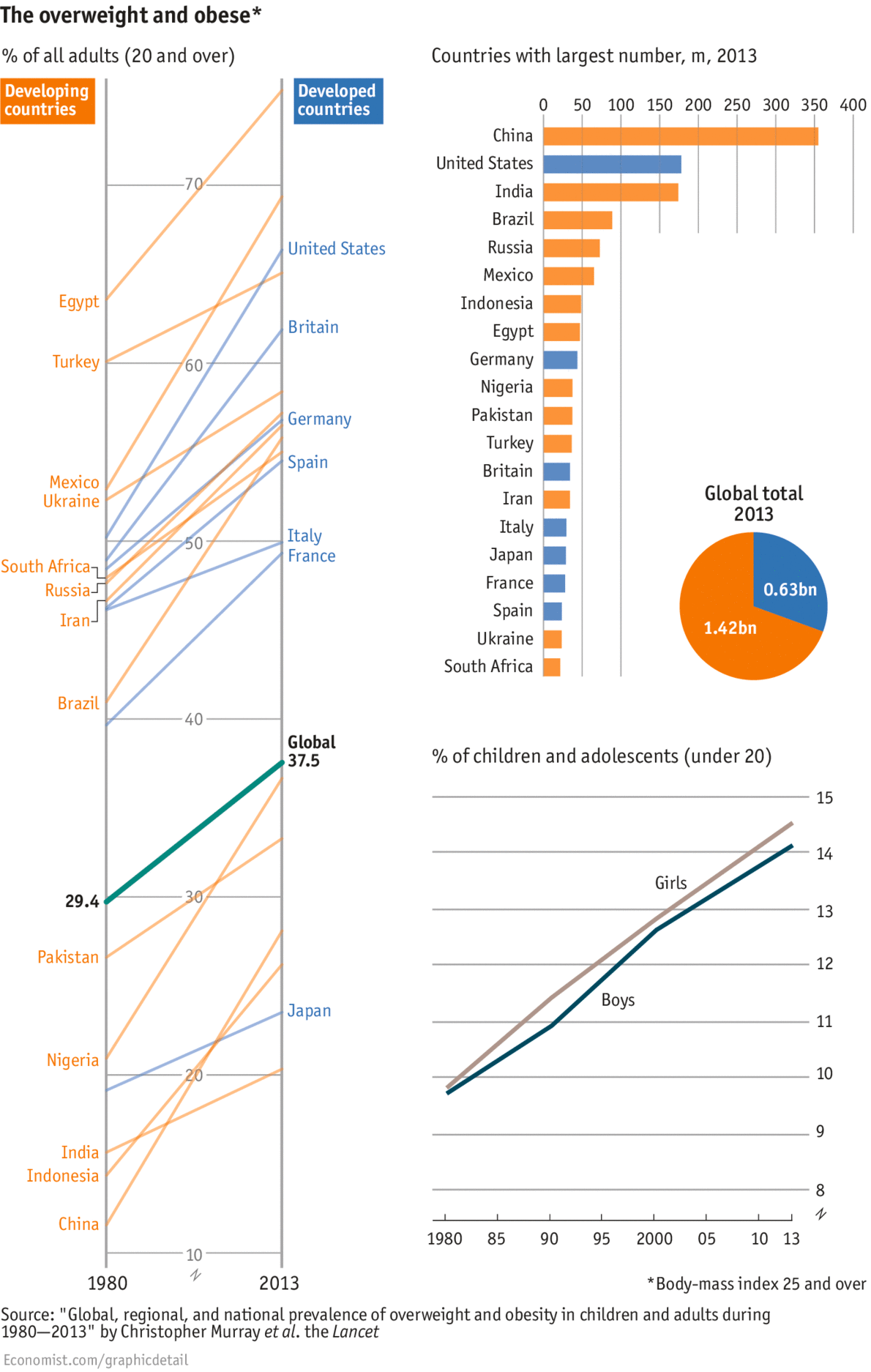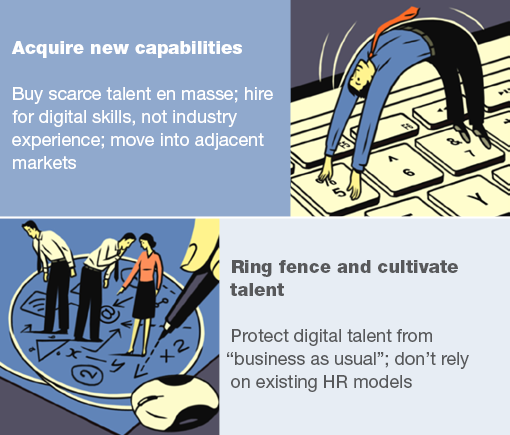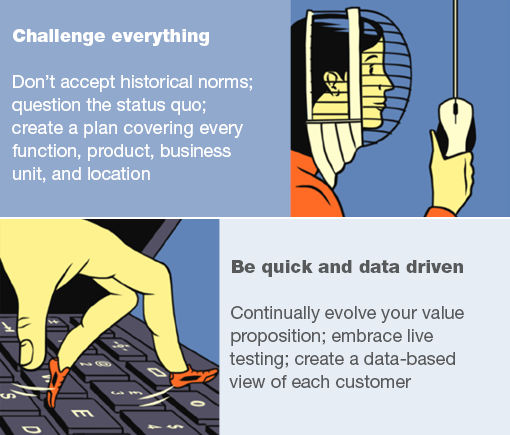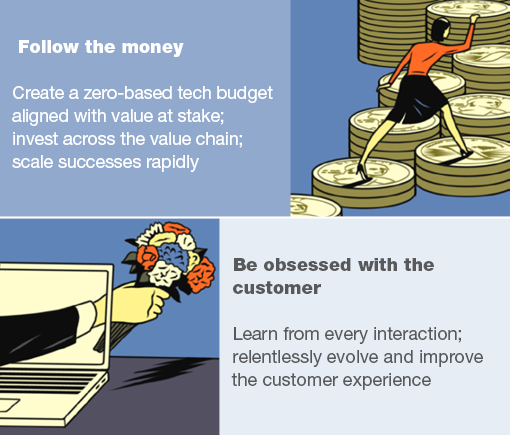In the end, only three things matter: how much you loved, how gently you lived, and how gracefully you let go of things not meant for you – Buddha
Monthly Archives: May 2014
Economist Daily Chart: Peak Fat
Worryingly, the study—led by the Institute of Health Metrics and Evaluation at the University of Washington—showed that children are fattening at a faster pace than adults. Last week the World Health Organisation set up a new commission to curb child obesity. But it will be some time yet before the world reaches peak fat.
http://www.economist.com/blogs/graphicdetail/2014/05/daily-chart-19?fsrc=scn/fb/wl/dc/peakfat
Daily chart
Peak fat
WAISTLINES are widening everywhere. The percentage of adults who are overweight or obese has swelled from 29% in 1980 to 37% in 2013, according to a new study in the Lancet. People in virtually all nations got larger, with the biggest expansions seen in Africa, the Middle East and New Zealand and Australia. The chunkiest nations overall are found in the tiny Pacific islands and Kuwait, where over three-quarters of adults are overweight and over half are obese. And the world is unlikely to slim down soon. While the rate of increase has slowed in the rich world, it is still rising in poorer countries, where two-thirds of the world’s 2.1 billion overweight adults live. China is home to the largest number anywhere—335m, more than the population of America. This is not just because of its sheer size, but also because economic growth led to cellulite growth: a quarter of adults are now overweight compared with one in ten in 1980.Mexicans just outweigh neighbouring Americans. In both countries, two-thirds of people could lose a pound or two, though more Americans are obese. Agreeing on how to combat the problem is tricky, given that experts continue to bicker on what, precisely, makes us fat. Worryingly, the study—led by the Institute of Health Metrics and Evaluation at the University of Washington—showed that children are fattening at a faster pace than adults. Last week the World Health Organisation set up a new commission to curb child obesity. But it will be some time yet before the world reaches peak fat.
Deeble Inst: Jury still out on P4P
PDF: deeble_issues_brief_no_6_partel_k_can_we_improve_the_health_system_with_performance_reporting
The jury is still out on pay-for-performance and other financial incentive mechanisms
Wed, 28/05/2014
Australian Healthcare and Hospitals Association (AHHA)
Can we improve the health system with pay-for-performance? is the latest Health Policy Issues Brief released by the Australian Healthcare and Hospitals Association’s Deeble Institute for Health Policy Research. Outlining Australian and international experiences with pay-for-performance, the brief unpacks the latest research evidence and implications for policymakers.
“The healthcare system is moving toward greater efficiency, transparency and accountability, and this trend is not likely to change,” Alison Verhoeven, Chief Executive of the AHHA said today. “To meet these goals, a number of financing reforms have been implemented across its health system, but it is unclear where the reform process is now headed.”
“We need to remember there is no single fix to improve service delivery and patient outcomes, to ensure financial sustainability and to increase accountability and transparency in a health system,” said Krister Partel, Policy Analyst with the AHHA’s Deeble Institute. “The jury is still out on whether financial incentive mechanisms, such as pay-for-performance, work as intended and deliver value for money, but if we want to go down that route then the research literature is rich in lessons to keep in mind when developing and rolling out pay-for-performance programs.”
“Regardless of how health financing is structured in the future, governments must ensure that changes strengthen the health system and improve public confidence in it,” said Alison Verhoeven.
“The AHHA is proud to support independent research to inform evidence-based policy development, and we look forward to furthering this discussion to maximise the use of health resources and enhance patient care.”
The Australian Healthcare & Hospitals Association represents Australia’s largest group of health care providers in public hospitals, community and primary health sectors and advocates for universal high quality healthcare to benefit the whole community.
Media inquiries:
Alison Verhoeven, Chief Executive, Australian Healthcare and Hospitals Association 0403 282 501
The Ice Diet
Frozen food includes a caloric deficit when eaten – the energy to melt it down. In a 100 cal dessert, this can account for up to a quarter of the calories. Go figure
http://www.theatlantic.com/health/archive/2014/05/the-ice-diet/371614/
The Ice Diet
When he became determined to lose weight, Dr. Brian Weiner decided to change his eating and exercise regimes. “One of the first changes I made,” explains Weiner, a gastroenterologist in New Jersey and assistant professor at Robert Wood Johnson Medical School, “was to give up my beloved ice cream.”
Aiming for something lighter, Weiner replaced it with Italian ices. The cups at his supermarket listed their calorie content as 100—calculated by multiplying 25 grams of carbohydrate by four calories per gram. “One evening, in a burst of insight,” Weiner writes, “I realized that this calculation was incorrect. The manufacturer of the ices did not calculate the energy required to melt the ice, and did not deduct this from the calorie calculation.” By Weiner’s math, he was actually only consuming 72 calories, or “icals,” his term for the net caloric content of ice-containing foods after considering the calories that the body burns to produce the thermal energy that melts the ice.
Weiner reviewed the medical literature. “I found that no one has clearly identified this oversight,” he writes. “I could not locate references to considerations of the implications of the energy content of ice as food.”
After discussing the issue in detail with his son, an engineering student at Rutgers who vetted his father’s calculations, Weiner submitted his story as a letter to editors of the widely-read medical journal Annals of Internal Medicine. They published it. In the article, Weiner said the idea could be of real importance to people trying to lose weight. It’s meant as a supplement to overall diet and lifestyle that go into maintaing a healthy physical form. “While eating ice, you are serving two purposes,” Weiner explains, “you are burning calories and not eating positive-calorie foods.”
Now Weiner has also written an e-book, The Ice Diet. It’s free—part of his stated wish “not to get lumped in with the counter-productive fad diet (snake oil) promoters.”
As a practicing gastroenterologist, Weiner says he regularly avoids micromanaging food selection. He manages obesity as an illness and diets as part of a holistic approach to good eating. “I would usually cringe when patients brought up the weight loss diet of the day, usually some poorly documented and improbable strategy. I never thought I would be actively promoting and discussing weight loss diets.”
But now he is, so, what’s to know about using Weiner’s ice diet?

When you eat a significant amount of ice, your body burns energy to melt it. Eating ice should, by the logic of this diet, also provide some level of satiety, if only so far as it physically fills space in the stomach and mouth.
By Weiner’s calculations, ingesting one liter of ice would burn about 160 calories, which is the energy equivalent of running one mile. So you get to eat and burn calories. Ever since the death of upward mobility, that has been The American Dream.
What’s more, it’s probably safe. “Ingesting ice at this level should not have any obvious adverse consequence in otherwise healthy persons,” Weiner, who trained at Johns Hopkins, writes. “For the vast majority of adults and children, there does not appear to be any contraindication to the use of the Ice Diet right now.”
One piece of evidence for the safety of ingesting substantial amounts of ice, Weiner notes, comes from the case study of the 32-ounce 7/11 Slurpee, from which he concludes, “The ingestion of one liter of ice per day appears to be generally safe.”
At some point beyond that liter, too much ice can be a problem. In the case of one obese person who attempted to eat seven quarts of ice per day, Weiner says, “Not surprisingly, this person suffered an uncomfortable feeling of coldness.” In his professional opinion, that much ice per day would, for most people, be a “toxic dose.” He recommends avoiding eating much more than the Slurpee-tested one liter of ice daily, “to avoid hypothermia or unusual cooling of the body. … Some organs do not work optimally when the body temperature drops too much.”
“For children using the Ice Diet, the amount of ice ingested should be monitored and related to their body weight and ability to report any problems that they might be having by ingesting ice.” Do not put ice into the mouths of children who can’t tell you if their brain has frozen.
For much the same reasons, use caution when using the ice diet during cold weather, Wiener says. Don’t eat ice on the ski slopes or while shoveling the walkway.
Don’t eat ice when you’re too hot, either. After running, for example, the body actually exerts energy through the active effort of dissipating excess heat that builds up during exercise. “If one were to ingest large amounts of ice as one was cooling off from exercise,” The Ice Diet warns, “some of the heat that had been generated by the exercise would be neutralized by the coolness of the ice, minimizing some of the energy burning benefits of the exercise.”
Physics writer Andrew Jones offers more skeptical calculations as to the caloric benefits of the ice diet, determining that eating a kilogram of ice would burn 117 calories. “To reach the 3,500 calories required to lose a pound of weight, it would be necessary to consume about 30 kilograms [66 pounds] of ice,” Jones writes. “Not exactly the most efficient diet plan.” That means, if you ate a liter of ice every day, you would lose about a pound of weight every month, all other things in life being equal. That’s not bad. And all other things wouldn’t be equal. Everything in your life would be different because you would be eating a liter of ice every day.
Also, of course, chewing ice can cause dental problems. Beyond full-blown cracking of teeth, the practice can damage the gums and enamel or injure the temporomandibular joint. To avoid dental damage, Weiner writes, “I would recommend that ice be allowed to melt in your mouth, as with ice pops, or consumed with the texture of shaved ice, as in the 7/11 Slurpee or the frozen margarita.”
Except don’t actually drink a liter of Slurpee every day because that sugar load would more than undermine this entire venture, and drinking a daily liter of margarita is this whole other thing. Weiner recommends making the process less onerous by making your own ice-pops using calorie free liquids instead of sugary concoctions or fruit juices. “For those with a larger budget, the Jimmy Buffett Margaritaville machine shaves ice into a very fine slurry, which can be consumed as-is or flavored with artificially flavored products.”
It’s that easy and, assuming the artificial flavoring you use is totally safe, you’re good to go. You don’t even have to worry about this fad diet becoming uncool. If anyone tells you it’s uncool, you can just cross your arms and say, “It’s objectively the coolest diet around in terms of temperature.” Pass the slurry.
information free health markets
in an information free health market, prices are set by how much doctors think they’re worth, not how good they actually are, let alone how well the treatments they provide work.
This must stop.
Be a rainbow
McKinsey: The seven habits of highly effective digital enterprises
- Be unreasonably aspirational
- Acquire capabilities
- Ring fence and cultivate talent
- Challenge everything
- Be quick and data driven
- Follow the money
- Be obsessed with the customer
PDF: The seven habits of highly effective digital enterprises
The seven habits of highly effective digital enterprises
To stay competitive, companies must stop experimenting with digital and commit to transforming themselves into full digital businesses. Here are seven habits that successful digital enterprises share.
May 2014 | by’Tunde Olanrewaju, Kate Smaje, and Paul Willmott
The age of experimentation with digital is over. In an often bleak landscape of slow economic recovery, digital continues to show healthy growth. E-commerce is growing at double-digit rates in the United States and most European countries, and it is booming across Asia. To take advantage of this momentum, companies need to move beyond experiments with digital and transform themselves into digital businesses. Yet many companies are stumbling as they try to turn their digital agendas into new business and operating models. The reason, we believe, is that digital transformation is uniquely challenging, touching every function and business unit while also demanding the rapid development of new skills and investments that are very different from business as usual. To succeed, management teams need to move beyond vague statements of intent and focus on “hard wiring” digital into their organization’s structures, processes, systems, and incentives.
There is no blueprint for success, but there are plenty of examples that offer insights into the approaches and actions of a successful digital transformation. By studying dozens of these successes—looking beyond the usual suspects—we discovered that highly effective digital enterprises share these seven habits.
1. Be unreasonably aspirational
Leadership teams must be prepared to think quite differently about how a digital business operates. Digital leaders set aspirations that, on the surface, seem unreasonable. Being “unreasonable” is a way to jar an organization into seeing digital as a business that creates value, not as a channel that drives activities. Some companies frame their targets by measures such as growth or market share through digital channels. Others set targets for cost reduction based on the cost structures of new digital competitors. Either way, if your targets aren’t making the majority of your company feel nervous, you probably aren’t aiming high enough.
When Angela Ahrendts became CEO of Burberry in 2006, she took over a stalling business whose brand had become tarnished. But she saw what no one else could: that a high-end fashion retailer could remake itself as a digital brand. Taking personal control of the digital agenda, she oversaw a series of groundbreaking initiatives, including a website (ArtoftheTrench.com) that featured customers as models, a more robust e-commerce catalog that matched the company’s in-store inventory, and the digitization of retail stores through features such as radio-frequency identification tags. During Ahrendts’s tenure, revenues tripled. (Apple hired Ahrendts last October to head its retail business.)
Netflix was another brand with an unreasonably aspirational vision. It had built a successful online DVD rental business, but leadership saw that the future of the industry would be in video streaming, not physical media. The management team saw how quickly broadband technology was evolving and made a strategic bet that placed it at the forefront of a surge in real-time entertainment. As the video-streaming market took off, Netflix quickly captured nearly a third of downstream video traffic. By the end of 2013, Netflix had more than 40 million streaming subscribers.
2. Acquire capabilities
The skills required for digital transformation probably can’t be groomed entirely from within. Leadership teams must be realistic about the collective ability of their existing workforce. Leading companies frequently look to other industries to attract digital talent, because they understand that emphasizing skills over experience when hiring new talent is vital to success, at least in the early stages of transformation. The best people in digital product management or user-experience design may not work in your industry. Hire them anyway.
Tesco, the UK grocery retailer, made three significant digital acquisitions over a two-year span: blinkbox, a video-streaming service; We7, a digital music store; and Mobcast, an e-book platform. The acquisitions enabled Tesco to quickly build up the skills it needed to move into digital media. In the United States, Verizon followed a similar path with strategic acquisitions that immediately bolstered its expertise in telematics (Hughes Telematics in 2012) and cloud services (CloudSwitch in 2011), two markets that are growing at a rapid pace.
This “acqui-hire” approach is not the only option. But we have observed that significant lateral hiring is required in the early stages of a transformation to create a pool of talent deep enough to execute against an ambitious digital agenda and plant the seeds for a new culture.
3. ‘Ring fence’ and cultivate talent
A bank or retailer that acquires a five-person mobile-development firm and places it in the middle of its existing web operations is more likely to lose the team than to assimilate it. Digital talent must be nurtured differently, with its own working patterns, sandbox, and tools. After a few false starts, Wal-Mart Stores learned that “ring fencing” its digital talent was the only way to ensure rapid improvements. Four years ago, the retail giant’s online business was lagging. It was late to the e-commerce market as executives protected their booming physical-retail business. When it did step into the digital space, talent was disbursed throughout the business. Its $5 billion in online sales in 2011 paled next to Amazon’s $48 billion.
In 2011, however, Wal-Mart established @WalmartLabs, an “idea incubator,” as part of its growing e-commerce division in Silicon Valley—far removed from the company’s Bentonville, Arkansas, headquarters. The group’s innovations, including a unified company-wide e-commerce platform, helped Wal-Mart increase online revenues by 30 percent in 2013, outpacing Amazon’s rate of growth.
Wal-Mart took ring fencing to the extreme, turning its e-commerce business into a separate vertical with its own profit and loss. This approach won’t work for every incumbent, and even when it does, it is not necessarily a long-term solution. Thus Telefónica this year recombined with the core business Telefónica Digital, a separate business unit created in 2011 to nurture and strengthen its portfolio of digital initiatives. To deliver in an omnichannel world, where customers expect seamless integration of digital and analog channels, seamless internal integration should be the end goal.
4. Challenge everything
The leaders of incumbent companies must aggressively challenge the status quo rather than accepting historical norms. Look at how everything is done, including the products and services you offer and the market segments you address, and ask “Why?” Assume there is an unknown start-up asking the exact same question as it plots to disrupt your business. It is no coincidence that many textbook cases of companies redefining themselves come from Silicon Valley, the epicenter of digital disruption. Think of Apple’s transformation from struggling computer maker into (among other things) the world’s largest music retailer, or eBay’s transition from online bazaar to global e-commerce platform.
Digital leaders examine all aspects of their business—both customer-facing and back-office systems and processes, up and down the supply chain—for digitally driven innovation. In 2007, car-rental company Hertz started to deploy self-service kiosks similar to those used by airlines for flight check-in. In 2011, it leapfrogged airlines by moving to dual-screen kiosks—one screen to select rental options via touch screen, a second screen at eye level to communicate with a customer agent using real-time video.
We see digital leaders thinking expansively about partnerships to deliver new value-added experiences and services. This can mean alliances that span industry sectors, such as the Energy@home partnership among Electrolux, Enel, Indesit, and Telecom Italia to create a communications platform for smart devices and domestic appliances.
5. Be quick and data driven
Rapid decision making is critical in a dynamic digital environment. Twelve-month product-release cycles are a relic. Organizations need to move to a cycle of continuous delivery and improvement, adopting methods such as agile development and “live beta,” supported by big data analytics, to increase the pace of innovation. Continuous improvement requires continuous experimentation, along with a process for quickly responding to bits of information.
Integrating data sources into a single system that is accessible to everyone in the organization will improve the “clock speed” for innovation. P&G, for example, created a single analytics portal, called the Decision Cockpit, which provides up-to-date sales data across brands, products, and regions to more than 50,000 employees globally. The portal, which emphasizes projections over historical data, lets teams quickly identify issues, such as declining market share, and take steps to address the problems.
U.S. Xpress, a US transportation company, collects data in real time from tens of thousands of sources, including in-vehicle sensors and geospatial systems. Using Apache Hadoop, an open-source tool set for data analysis, and real-time business-intelligence tools, U.S. Xpress has been able to extract game-changing insights about its fleet operations. For example, looking at the fuel consumption of idling vehicles led to changes that saved the company more than $20 million in fuel consumption in the first year alone.
6. Follow the money
Many organizations focus their digital investments on customer-facing solutions. But they can extract just as much value, if not more, from investing in back-office functions that drive operational efficiencies. A digital transformation is more than just finding new revenue streams; it’s also about creating value by reducing the costs of doing business.
Investments in digital should not be spread haphazardly across the organization under the halo of experimentation. A variety of frequent testing is critical, but teams must quickly zero in on the digital investments that create the most value—and then double down.
Often, great value is found in optimizing back-office functions. At Starbucks, one of the leaders in customer-experience innovation, just 35 of 100 active IT projects in 2013 were focused on customer- or partner-facing initiatives. One-third of these projects were devoted to improving efficiency and productivity away from the retail stores, and one-third focused on improving resilience and security. In manufacturing, P&G collaborated with the Los Alamos National Laboratory to create statistical methods to streamline processes and increase uptime at its factories, saving more than $1 billion a year.
7. Be obsessed with the customer
Rising customer expectations continue to push businesses to improve the customer experience across all channels. Excellence in one channel is no longer sufficient; customers expect the same frictionless experience in a retail store as they do when shopping online, and vice versa. Moreover, they are less accepting of bad experiences; one survey found that 89 percent of consumers began doing business with a competitor following a poor customer experience. On the flip side, 86 percent said they were willing to pay more for a better customer experience.1
A healthy obsession with improving the customer experience is the foundation of any digital transformation. No enterprise is perfect, but leadership teams should aspire to fix every error or bad experience. Processes that enable companies to capture and learn from every customer interaction—positive or negative—help them to regularly test assumptions about how customers are using digital and constantly fine-tune the experience.
This mind-set is what enables companies to go beyond what’s normal and into the extraordinary. If online retailer Zappos is out of stock on a product, it will help you find the item from a competitor. Little wonder that 75 percent of its orders come from repeat customers.
Leaders of successful digital businesses know that it’s not enough to develop just one or two of these habits. The real innovators will learn to excel at all seven of them. Doing so requires a radically different mind-set and operating approach.
Samsung moving into value-based pharma..?!
Go Samsung… it would be great to see the traditional pharma model disrupted in this way…
A New Era in Value-Driven Pharmaceuticals
 At the end of March the Amercian College of Cardiology (ACC) and the American Heart Association (AHA) issued a joint statement saying they “will begin to include value assessments when developing guidelines and performance measures (for pharmaceuticals), in recognition of accelerating health care costs and the need for care to be of value to patients.”
At the end of March the Amercian College of Cardiology (ACC) and the American Heart Association (AHA) issued a joint statement saying they “will begin to include value assessments when developing guidelines and performance measures (for pharmaceuticals), in recognition of accelerating health care costs and the need for care to be of value to patients.”
You may have heard of value-based medicine, but are we entering a new era of value-based medications or value-driven pharma?
Price transparency is great, but it has be combined with efficacy to get to value (price for the amount of benefit). Medical groups are catching on to how important value assessments are, because if patients can’t afford their medication, they won’t take their medication, and that obviously can turn into poor outcomes.
Twenty-seven percent of American patients didn’t fill a prescription last year according to a Kaiser Family Foundation Survey. This trend seems likely to continue as we move toward higher-deductible plans, where those with insurance can have great difficulty affording medications.
Included in the ACC/AMA statement was a quote from Paul Heidenreich, MD, FACC, writing committee co-chair and vice-chair for Quality, Clinical Affairs and Analytics in the Department of Medicine at Stanford University School of Medicine.
“There is growing recognition that a more explicit, transparent, and consistent evaluation of health care value is needed…These value assessments will provide a more complete examination of cardiovascular care, helping to generate the best possible outcomes within the context of finite resources.”
Spreading risk and payment to different members of the health care value chain is beginning to make it apparent to more people and organizations that resources are finite. Patients and their physicians are starting to ask which treatments are worth the cost and have best likelihood of adherence.
An outgrowth of the move toward digital health and accountable care is that we’re entering every patient into a potential personal clinical trial with their data followed as a longitudinal study, and we can look much more closely at efficacy and adherence and reasons why it happens and why it doesn’t.
It won’t be long before we start to see comparative effectiveness across a variety of treatments and across a variety of populations. When we can connect outcomes data, interventions and costs all in the same picture we begin to see where the value (price against results) is and where it isn’t.
The opportunity to assess value of treatments is bringing non-traditional players into the value-driven pharma arena. Samsung recently announced that they are becoming a drug company. According to Quartz:
“Electronics giant Samsung recently announced a foray into big pharma. The South Korean company is set to invest over $2 billion into biopharmaceuticals—drugs developed from biological sources (e.g. vaccines or gene therapies) as opposed to traditional chemical cocktails—with a focus on creating cheaper versions of existing therapies.”
The real advantage may be access to patient information via mobile. The Quartz article goes on to say:
“…cheapness won’t be Samsung’s only advantage. The company better known for its smartphones could also take advantage of the fact that the pharma industry has been slow to explore mobile health technology…The biotech industry is expected to generate sales of more than $220 billion in five years, Bloomberg reports, and Samsung expects to be taking a $1.8 billion slice of the pie by that time. The company will start by copying Enbrel (an arthritis therapy by Amgen Inc.) and Remicade (Johnson & Johnson’s autoimmune disease treatment) in the next couple of years.”
Samsung is going after arthritis, which Enbrel and Remicade treat. On the surface, this makes sense. Mobile devices are good at tracking and reporting what arthritis impairs– movement– opening up the opportunity for Samsung to close the loop on the effectiveness of their own drugs using their smart phones, tracking progress and improvement.
Pharma has been slow to explore mobile health and data science and slow to leverage social media and other sources of consumer health data effectively for a variety of reasons — some legal (we aren’t responsible for what we don’t know) and some historical.
This could be a severe disadvantage when looking to leverage existing therapies. Combing through available data from existing research can provide new and cheaper alternatives and, with relatively easy biosimilar approval, see how they compare.
Industry observers are beginning to see this shift and this opportunity, raising alarm bells for big pharma. Are they listening? Over the past month there’s been a virtual outcry for a business model for Pharma that’s based on value. Ernst & Young released a report (.pdf) calling for “radical collaboration.” Dan Munro at Forbes picked out the key line and bold proclamation from the report:
“Almost every life sciences company, regardless of their product or offering, will soon be expected to help change behaviors and deliver better health outcomes.”
EY hits the nail on the head. The combination of value-based care, digital health, and mobile technologies is inevitably driving toward pharma price and evidence transparency and a much better look at the efficacy of various treatments.
Samsung came late to the smart phone market, then experimented with pricing and models before taking over the top place from Apple. Now focusing on biosimilars, Samsung could be following a similar pattern in pharma, testing to see what combinations will work best, powered by ongoing results in a closed feedback-loop system.
Munro asks the question, “To what extent, and in what ways, should pharma companies move beyond the product?” Samsung may be answering that question.
AthenaHealth’s Jonathan Bush echoed the chorus for a new pharma business model in April to a group of pharma executives saying:
“Take every drug you have and organize it by disease by the number of hospital days that could go away…Find the moments that matter financially and clinically.” And further, “Follow up on the prescriptions that are written and make sure the patients get those drugs but also ‘don’t end up in the hospital…Relentlessly follow up on all conditions for success…”
We wonder if “all conditions for success” might also include the condition of affordability.
Jamie Heywood, CEO of PatientsLikeMe, hinted at a value-based medication future in a Nature Medicine interview recently on their new collaboration with Genentech, saying, “What we need to do is get more value for health care, and value means you have competitive outcomes. And that’s what, in our longest dreams, I think PatientsLikeMe begins to bring to bear.”
Samsung is in a unique position to capitalize on social, mobile and, peer interaction. Munro writes in Forbes about a social network/app,Whisper, that is on a fast-track trajectory because of its anonymous posting. Pharma companies could learn great deal of information on the derailing of adherence to treatment by following these posts. And if they don’t, others will fill the void by both providing and applying data to physicians and consumers as well as pulling in data from consumers.
On the data provider and application side, one Startup Health company seeks to provide cost and value transparency of medications at the point of care and bring the price discussion into the exam room.
RxREVU provides data services via API to use peer-reviewed value-based medication decisions for clinicians and their patients (full disclosure, RxREVU is a client of VivaPhi, Leonard Kish’s agency). Because it’s an API, it could also be deployed in the context of a mobile app at the point of care.
This data has always existed, what’s new is the demand for it and how it’s applied.
On the data intake side, more clinically-focused companies such as GoGoHealth are allowing remote EHR intake, improving access to consumer health data, including social determinants of health, to allow for faster, individualized attention by providers (GoGoHealth, also a StartupHealth company, is mentored by Center of Health Engagement, Nayer’s organization).
Part of that is allowing patients to lower barriers to enter the system, getting remote office visits and phone refills. A side product of these kinds of interactions is an understanding of what prevents and what enables patients from continuing on a course of treatment.
As providers and patients assume more of the risk and pay more of the bill, they are seeking solutions that can provide value-based treatment decisions that fit their personalized needs.
The most valuable solutions in a value-driven era will be those that we are able to customize based on information from a wide variety of sources and place the solutions into a contextual format in which patients ultimately have to treat themselves, including financial contexts.
Those that stick with the old pharma model, leaving data and consumers-as-patients out of the mix, will wind up with much less valuable medicine.
Leonard Kish (@leonardkish) is Principal and Co-Founder at VivaPhi, an agency that solves multi-disciplinary business problems involving data science, software, biomedical science, behavioral science, health care, product design, community development, marketing, consumer engagement and organizational design.
Cyndy Nayer (@CyndyNayer) is the founder and CEO of the Center of Health Engagement, an agency promoting strategic investments in health value for employers, health plans and provider organizations.
This post originally appeared in HL7 Standards.
Paul Gross – a fan of Singapore’s Health System policy
IFTTT = If This Then That (awesome)
Automated Life Logging. Go Figure.
http://www.engadget.com/2014/05/20/ifttt-fitbit-channel/
IFTTT now automates tasks based on your Fitbit activity
If you’re sporting one of Fitbit’s activity trackers, you can now automate tasks and reminders with the help of IFTTT (If This Then That). The recipe-based software announced a dedicated channel for the sporty gadgets today, handling duties based on goals, activity, sleep, weight and more. For example, you can now log a weigh-in via text message or automatically beam sleep stats to a Google Spreadsheet each morning. Of course, those are just a couple of the possibilities, and users can construct their own formulas as well. Those who prefer Jawbone’s wearables have already been privy to the automated life logging, with other wrist-worn devices like the Pebble smartwatch supported too.








